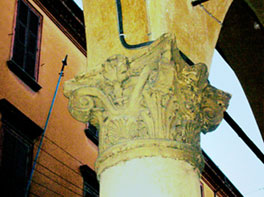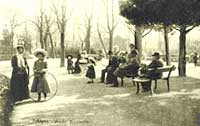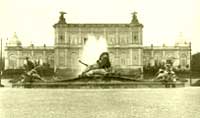|
BED AND BREAKFAST IN BOLOGNA ACCOMMODATION IN BOLOGNA ERBORISTERIA WEBMASTER |
||||||
|
|
The Unification of Italy brought the Haussmann style to
Bologna: wide, straight streets, like via dell'lndipendenza, cut through
the ancient city in the name of "progress" and of "modernity". The style which was imposed on town-planning came from
France in the Second Empire (Bolognese memories go back to the Bentivoglio
period) following the example of the Prefect Haussmann, who created the
"boulevards" inside the town. So, 23 years later, in 1881, Via dell'lndipendenza was
inaugurated which was the direct link between the railway station (the
station building was made in 1871) and Piazza Maggiore. In 1863, the
railway line Bologna-Pistoia was
opened. ln
that same period,
before the end ofthe 19th Century, Piazza Cavour and Piazza Minghetti were
also opened; the plan was drawn up and the work began for the "palazzate
constructions" in Via Farini; the wide Margherita gardens (from the name
of the queen) were fenced; In the 80's the city exceeded 90,000 inhabitants, while the illiteracy fell by 33%. It was during this period that, especially in this area, the socialist movement which here gathered more people than in the rest of the country began to get stronger. |
|
b u |
|||
|
General - Environment - Iron and Etruscan Age - Roman Age - Patron Saint- The Commune - Alma mater studiorum - Re Enzo - Porticoes - St Peter - Gothic - 14th Century - Piazza Maggiore - Aristocratic palaces - Brick and other stones - Early 15th Century - Archiginnasio - Counter Reformation Renaissance - 16th Century - Great portico ribbons - Frescoes in palaces - The "scenographic" city - Napoleon's republics - Fall of Church power - The Restoration - Haussmann style - The new Century - Floreal style - Rationalism - World War - Active preservation - Around 2000 |
||||||


